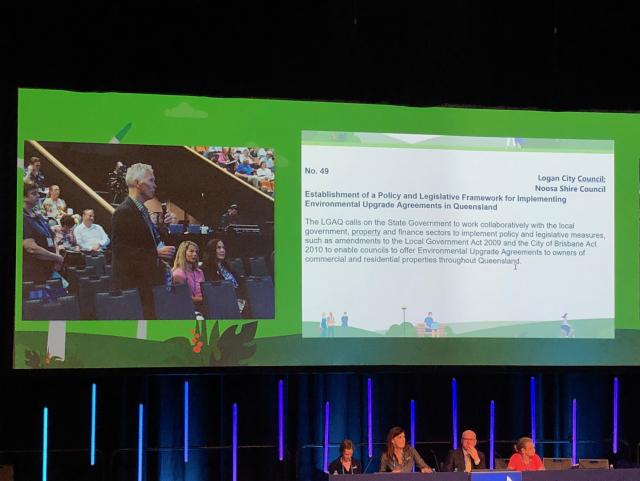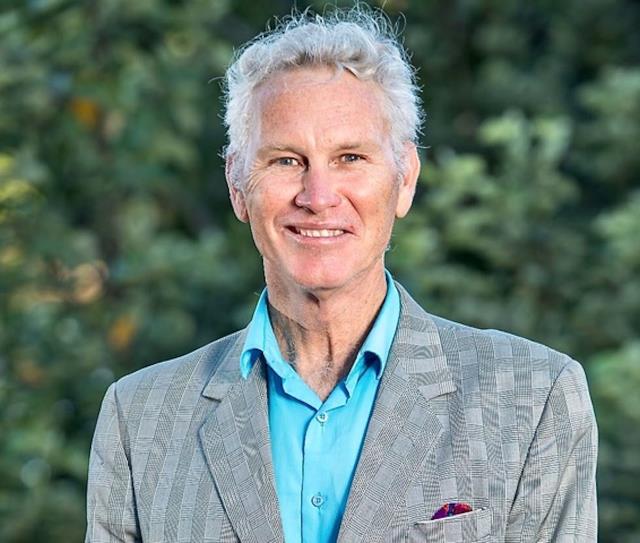Queensland councils have embraced energy-efficient technologies, are considering a Bed Tax to cover tourism costs and voters will again run the how-to-vote-card gauntlet at local government election booths in 2024.
These were among strong voting trends at the last week’s Local Government Association of Queensland (LGAQ) conference in Cairns.
Liveability was the theme of the event where over 200 voting delegates plus observers from the 77 councils planned their advocacy with State and Federal Governments.
With 137 motions proposed by councils for the debate, Noosa Council’s two voting delegates Mayor Stewart and Deputy Mayor Wilkie plus two observers Crs Finzel and Lorentson were successful in having the five proposals endorsed by all Noosa Councillors carried by a clear majority.
Housing
Noosa’s motion requested the LGAQ call on the State to review their property assets and invest in affordable, social and community housing. This added weight to the existing pressure applied at a state-level to address this crisis.
Draft town plan amendments from the Noosa Housing Strategy to enable partnerships with providers, offering lower than market rents, are due before end of year. Noosa’s affordable housing plans respect the shire’s modest population growth targets and carrying capacity.
That said, expect pressure at high levels to open up land outside the urban footprint for development, using affordable housing as the driving argument.
There are concerns about development company Stockland’s purchase of 21 hectares of rural-zoned land in Noosa Shire’s south-western pocket in Peregian.
The State Government in 2010 sidelined the Sunshine Coast Council (SCC) to permit Stockland to build the City of Aura south of Caloundra, citing affordable housing. With a predicted population of 50,000, similar to the City of Gladstone, small lot homes in Aura were last week listed from $584,236 on 280sqms to $952,656 on 374sqms.
Demand is so strong in this region that market forces keep prices high.
Increasing housing supply is not seen as the answer for low to middle-income families under Noosa’s Housing Strategy, nor is placing social housing on isolated, flood prone land or away from transport and other services. “Affordable housing” in this debate is as defined under the Planning Regulation 2017, where households spend no more than 30 per cent of income on housing costs.
Cost/energy efficient design
The second motion was to allow councils to include climate responsive (cost, water and energy-saving plus design) features for new buildings in their planning schemes.
This is back to the future for those who recall water tanks and energy-saving hot water systems required on new homes in the early 2000s, before being removed by the State in 2012.
Next was a similar motion calling for the adoption of the new National Construction Code, with a minimum seven-star (out of 10) sustainability rating for new buildings.
There’s now more recognition of the long-term, cost-of-living savings in owning or renting smart homes, despite the higher upfront purchase cost.
Wastewater reuse
Next was a motion to request the State pro-actively support the re-use of wastewater.
As several council delegates said, many local governments are already re-using wastewater and it was important to keep this issue bubbling.
Locally, there has been limited wastewater re-use and the council continues talks with Unity Water about opportunities that may flow from any planned upgrades to the Noosa Water Treatment plant.
A proposal two decades ago to pump Noosa’s wastewater to Lake MacDonald was rejected due to public sentiment at the time.
Environmental upgrade agreements
Noosa’s final motion was to have laws changed to allow councils to offer Energy Upgrade Agreements (EUA) to property owners.
This is where finance company loans overcome initial sustainable design and technology upgrade costs, which are tied to the property, not the borrower, and recouped through rates at no cost to the council.
Noosa community group ZEN Inc alerted Noosa Council to this option, already in place in NSW, Victoria and South Australia and offered by over 60 councils to property owners.
The Queensland Government had since already moved to offer EUAs to commercial property owners as part of its Jobs and Energy Plan.
The motion was amended to help ensure residential property owners could also benefit.
Evolving focus
After more intense floods and fires, conference debate in recent years has shifted towards adoption of renewable energy technologies and responsibly helping communities become more climate and cost-resilient as they transition towards carbon neutral.
Noosa Council is trailing others around Australia that are already carbon neutral, mainly because those Local Governments do not have a landfill – which is our council’s major source of emissions – or they are investing heavily in offsets.
Offsets and new waste to energy/resource technologies are considered part of Noosa’s solution.
Bed tax
The most vigorously-debated motion was for the State to allow councils to introduce a bed tax for visitors, if they wished.
This user-pays idea was moved by Cairns City council, where heavy visitation and a procession of large cruise ships bring thousands to the central business district, foreshore boardwalks, parks, swimming lagoon, public toilets and exercise facilities.
After gaining support from their tourism stakeholders, Cairns Mayor Bob Manning said a 2.5 per cent tax on all visitor accommodation beds could be used to specifically fund high-use asset maintenance and tourism marketing.
Delegates from smaller bush councils struggling to attract visitors said they would not impose the fee but also voted in favour, so they could promote their communities as no tax destinations.
Like Sunshine, Gold Coast and other Councils, Noosa charges a higher rate in the dollar for short-term visitor accommodation properties, which returns $15.5 million a year in rates.
The former Tourism Levy charged on all businesses was removed in mid 2021.
Tourism Noosa, which receives $2.6M under the current funding agreement, has traditionally pursued the quality over quantity approach and targeted the high-yield interstate and overseas traveller.
This changed during Covid where the town was temporarily promoted to the regional drive market.
Since the late 1980s, the Noosa philosophy has been to ensure our natural environment was protected, and parks, gardens, boardwalks and facilities kept to a high standard, firstly out of respect for those who live here, the residents.
If this was done, then it was thought visitors were bound, by default, to also enjoy the experience.
The public debate has recently shifted to seeing our assets labelled as tourism infrastructure, despite residents’ daily use.
This view is respected as an expression of locals feeling overwhelmed and frustrated by the constantly high visitation experienced now.
Day visitor levels remain high.
The rapid population growth in neighbouring shires and throughout South-East Queensland is seen as a driving factor.
The idea of a bed tax is bound to feature in the upcoming public consultation for the Noosa Destination Management Plan.
The plan aims to protect what we all love about our community in the face of ever-increasing visitor numbers and other pressures.
Running the guantlet
The conference also blocked a proposal to have the Electoral Commission of Queensland re-introduce the 2020 Covid election measures, where candidates were banned from booths and voters were free to seek out How to Vote cards from tables, without having to “run the gauntlet”.
Respect for voters’ personal space and preservation of an open democratic process are the two opposing forces in this debate, which has been contested at the conference since the early 2000s.
Councillors attend these forums thanks to ratepayer-funded allowances.
The LGAQ will be refining its advocacy strategy in the coming months.
(Frank Wilkie is a former journalist and high school teacher. These views are not necessarily the official position of the Noosa Shire Council.)








